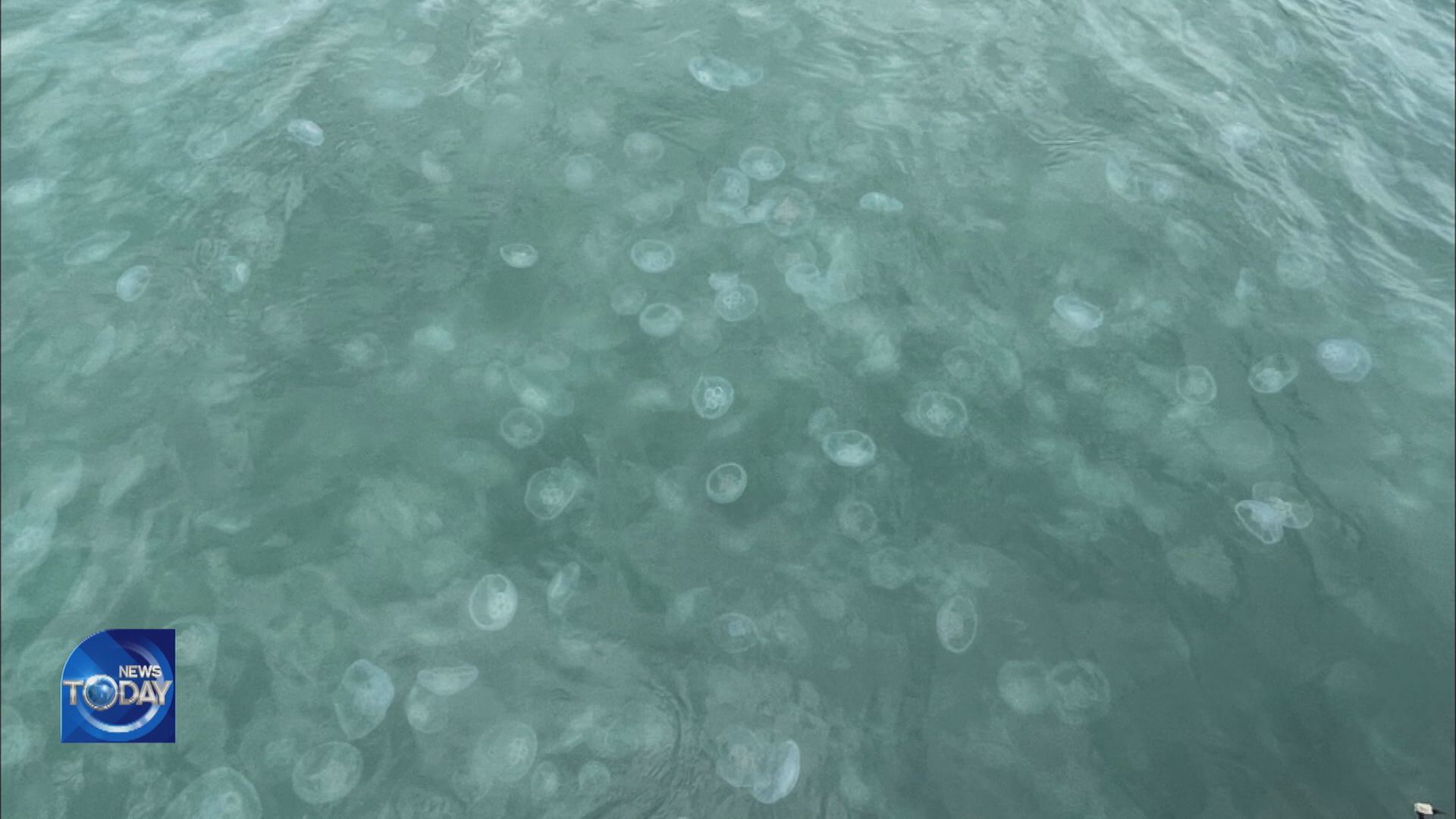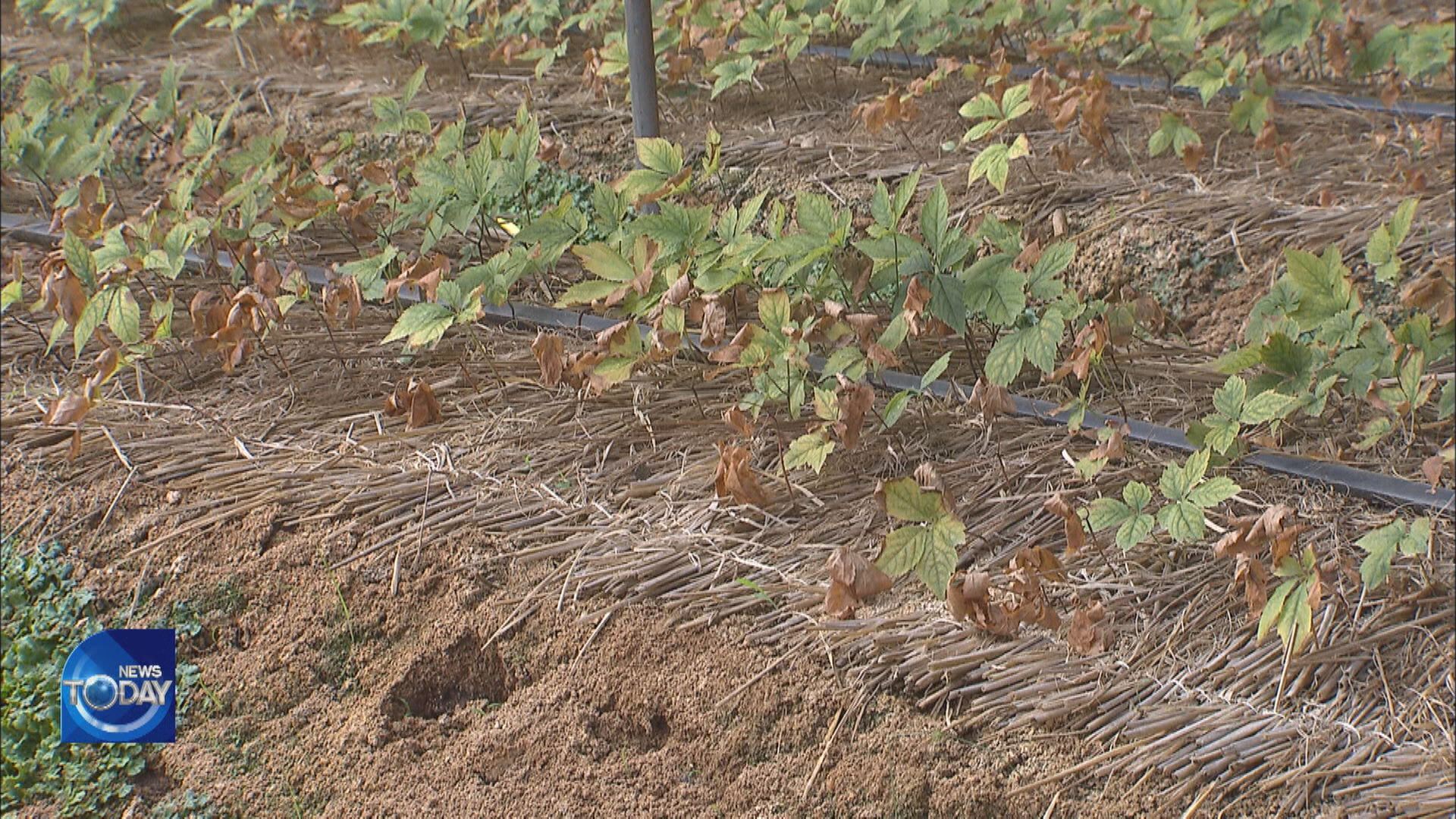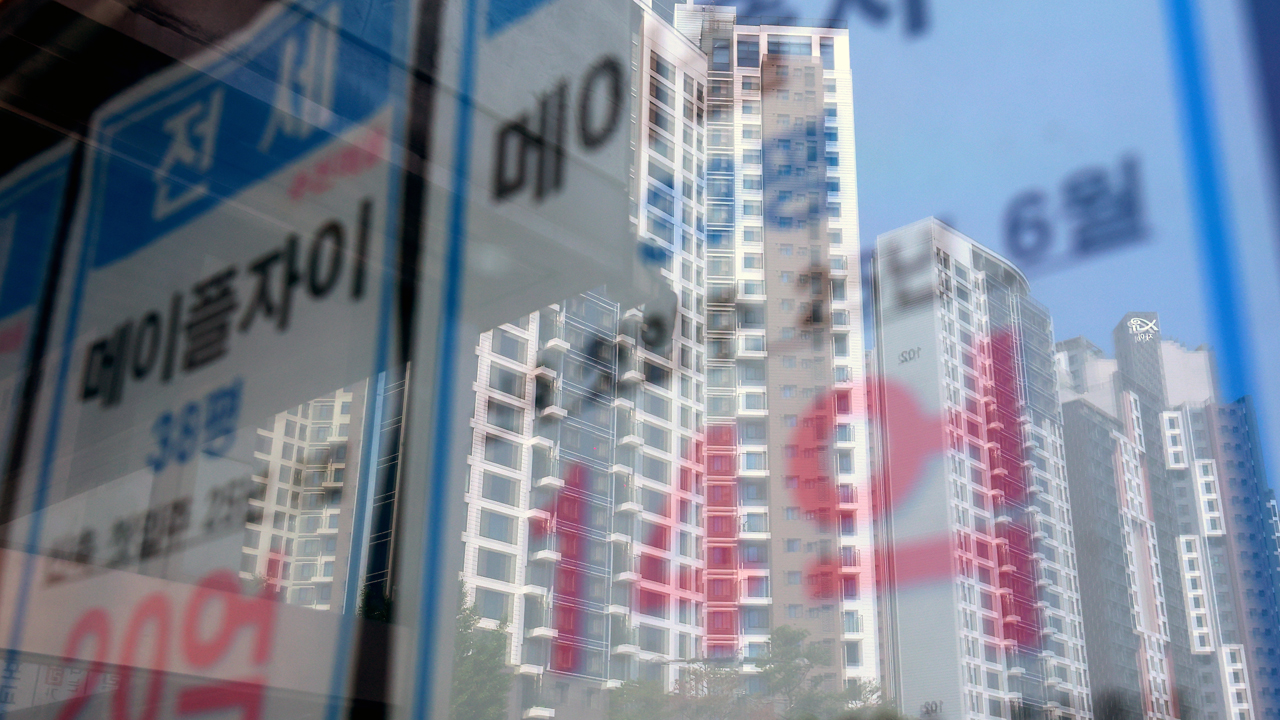INCREASE IN JELLYFISHES
입력 2021.07.29 (15:21)
수정 2021.07.29 (16:45)
읽어주기 기능은 크롬기반의
브라우저에서만 사용하실 수 있습니다.
[Anchor Lead]
Scorching heat affects the marine ecosystem as well. Warmer sea temperatures tend to invite jellyfish, an unpleasant pest for fishermen. Jellyfish are thriving in waters off Goheung, Jeollanam-do Province to the point that they interfere with fishing.
[Pkg]
Deukryangman Bay spanning from Goheung and Boseong to Jangheung in Jeollanam-do Province. Fishermen pull up a net but it is filled with translucent jellyfish instead of their daily catch. These are moon jellies that appear during the summer season when sea temperatures rise. The moon jelly may not be very toxic but they tend to appear in great numbers and ruin the fishing grounds.
[Soundbite] Kang Du-yeong(Shrimp Fisherman) : "The net is dragged to catch shrimps, but it fills up with jellyfish instead, keeping other fish and shrimps out of the net and causing much loss for fishermen."
It was June 23rd when a jellyfish alert was issued in the Gyeongsangnam-do and Jeollanam-do seas. Its population is only growing with time. In some cases, up to 28,000 jellyfish per 100 square meters have been observed. Local governments are out to remove them everyday, but insufficient budget and manpower are the problems.
[Soundbite] Lee Jeong-wan(Oceans and Fisheries Bureau, Goheung-gun County Gov’t) : "We are severely short on budget. The allocated money is used up in about 10 days. We need to implement a bigger budget."
A daily average of between 30 and 50 tons of jellyfish are caught in Goheung-gun County alone. Longer days and warmer seawater are causing jellyfish to grow faster. Fishermen are worried that a prolonged heat wave would worsen the damage.
Scorching heat affects the marine ecosystem as well. Warmer sea temperatures tend to invite jellyfish, an unpleasant pest for fishermen. Jellyfish are thriving in waters off Goheung, Jeollanam-do Province to the point that they interfere with fishing.
[Pkg]
Deukryangman Bay spanning from Goheung and Boseong to Jangheung in Jeollanam-do Province. Fishermen pull up a net but it is filled with translucent jellyfish instead of their daily catch. These are moon jellies that appear during the summer season when sea temperatures rise. The moon jelly may not be very toxic but they tend to appear in great numbers and ruin the fishing grounds.
[Soundbite] Kang Du-yeong(Shrimp Fisherman) : "The net is dragged to catch shrimps, but it fills up with jellyfish instead, keeping other fish and shrimps out of the net and causing much loss for fishermen."
It was June 23rd when a jellyfish alert was issued in the Gyeongsangnam-do and Jeollanam-do seas. Its population is only growing with time. In some cases, up to 28,000 jellyfish per 100 square meters have been observed. Local governments are out to remove them everyday, but insufficient budget and manpower are the problems.
[Soundbite] Lee Jeong-wan(Oceans and Fisheries Bureau, Goheung-gun County Gov’t) : "We are severely short on budget. The allocated money is used up in about 10 days. We need to implement a bigger budget."
A daily average of between 30 and 50 tons of jellyfish are caught in Goheung-gun County alone. Longer days and warmer seawater are causing jellyfish to grow faster. Fishermen are worried that a prolonged heat wave would worsen the damage.
■ 제보하기
▷ 카카오톡 : 'KBS제보' 검색, 채널 추가
▷ 전화 : 02-781-1234, 4444
▷ 이메일 : kbs1234@kbs.co.kr
▷ 유튜브, 네이버, 카카오에서도 KBS뉴스를 구독해주세요!
- INCREASE IN JELLYFISHES
-
- 입력 2021-07-29 15:21:04
- 수정2021-07-29 16:45:59

[Anchor Lead]
Scorching heat affects the marine ecosystem as well. Warmer sea temperatures tend to invite jellyfish, an unpleasant pest for fishermen. Jellyfish are thriving in waters off Goheung, Jeollanam-do Province to the point that they interfere with fishing.
[Pkg]
Deukryangman Bay spanning from Goheung and Boseong to Jangheung in Jeollanam-do Province. Fishermen pull up a net but it is filled with translucent jellyfish instead of their daily catch. These are moon jellies that appear during the summer season when sea temperatures rise. The moon jelly may not be very toxic but they tend to appear in great numbers and ruin the fishing grounds.
[Soundbite] Kang Du-yeong(Shrimp Fisherman) : "The net is dragged to catch shrimps, but it fills up with jellyfish instead, keeping other fish and shrimps out of the net and causing much loss for fishermen."
It was June 23rd when a jellyfish alert was issued in the Gyeongsangnam-do and Jeollanam-do seas. Its population is only growing with time. In some cases, up to 28,000 jellyfish per 100 square meters have been observed. Local governments are out to remove them everyday, but insufficient budget and manpower are the problems.
[Soundbite] Lee Jeong-wan(Oceans and Fisheries Bureau, Goheung-gun County Gov’t) : "We are severely short on budget. The allocated money is used up in about 10 days. We need to implement a bigger budget."
A daily average of between 30 and 50 tons of jellyfish are caught in Goheung-gun County alone. Longer days and warmer seawater are causing jellyfish to grow faster. Fishermen are worried that a prolonged heat wave would worsen the damage.
Scorching heat affects the marine ecosystem as well. Warmer sea temperatures tend to invite jellyfish, an unpleasant pest for fishermen. Jellyfish are thriving in waters off Goheung, Jeollanam-do Province to the point that they interfere with fishing.
[Pkg]
Deukryangman Bay spanning from Goheung and Boseong to Jangheung in Jeollanam-do Province. Fishermen pull up a net but it is filled with translucent jellyfish instead of their daily catch. These are moon jellies that appear during the summer season when sea temperatures rise. The moon jelly may not be very toxic but they tend to appear in great numbers and ruin the fishing grounds.
[Soundbite] Kang Du-yeong(Shrimp Fisherman) : "The net is dragged to catch shrimps, but it fills up with jellyfish instead, keeping other fish and shrimps out of the net and causing much loss for fishermen."
It was June 23rd when a jellyfish alert was issued in the Gyeongsangnam-do and Jeollanam-do seas. Its population is only growing with time. In some cases, up to 28,000 jellyfish per 100 square meters have been observed. Local governments are out to remove them everyday, but insufficient budget and manpower are the problems.
[Soundbite] Lee Jeong-wan(Oceans and Fisheries Bureau, Goheung-gun County Gov’t) : "We are severely short on budget. The allocated money is used up in about 10 days. We need to implement a bigger budget."
A daily average of between 30 and 50 tons of jellyfish are caught in Goheung-gun County alone. Longer days and warmer seawater are causing jellyfish to grow faster. Fishermen are worried that a prolonged heat wave would worsen the damage.
이 기사가 좋으셨다면
-
좋아요
0
-
응원해요
0
-
후속 원해요
0














![[단독] 경찰, 우리은행 부당대출 혐의 47억 원 추가 확인](/data/news/2025/07/02/20250702_RyG3im.jpg)


이 기사에 대한 의견을 남겨주세요.